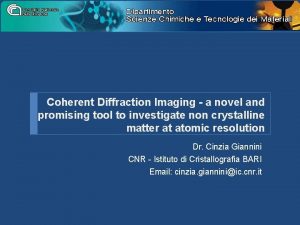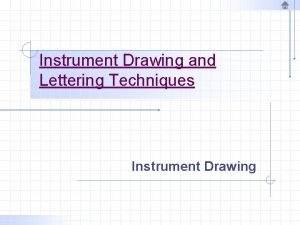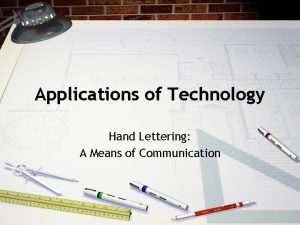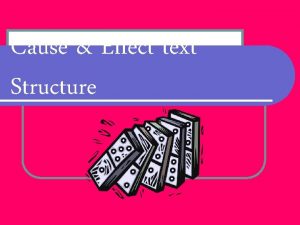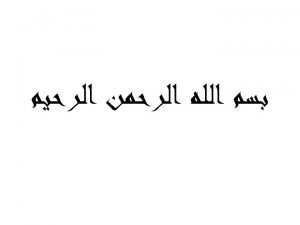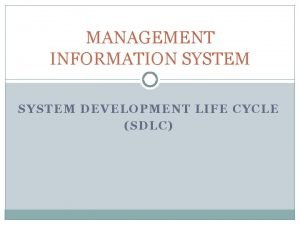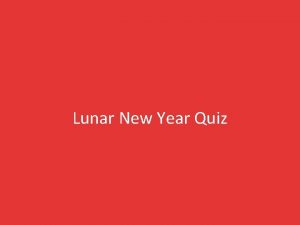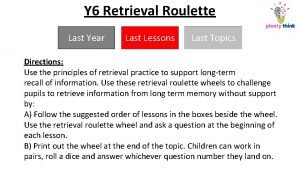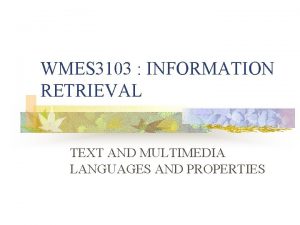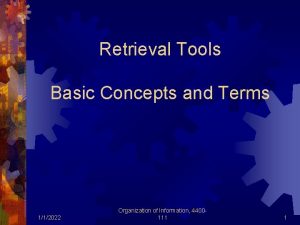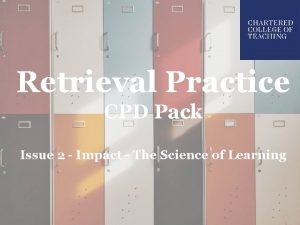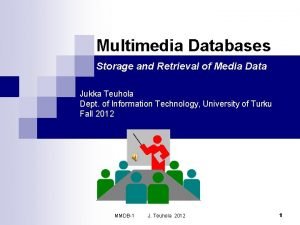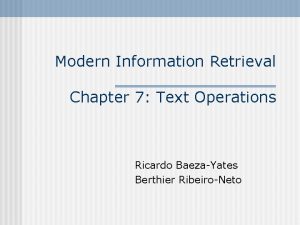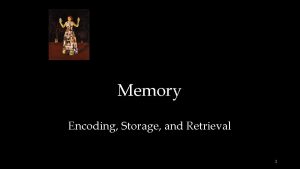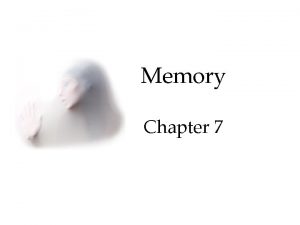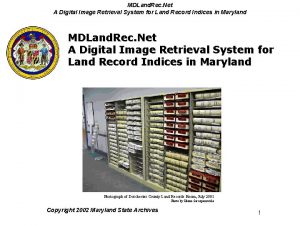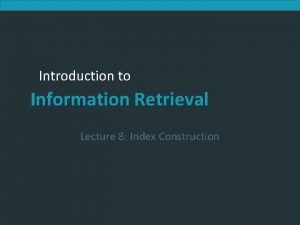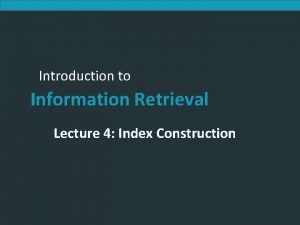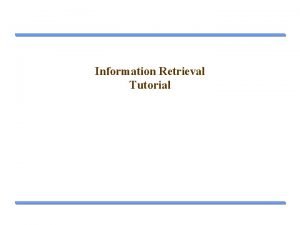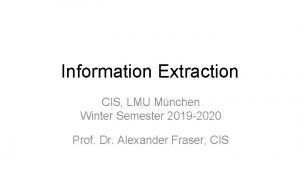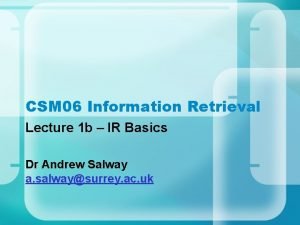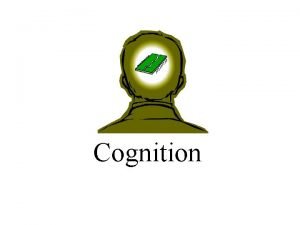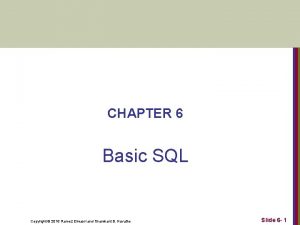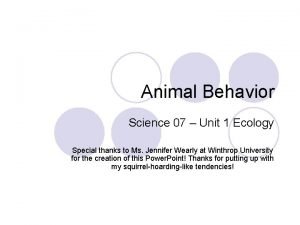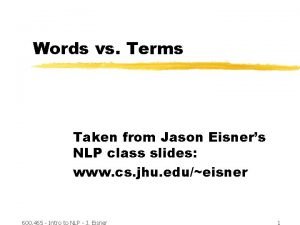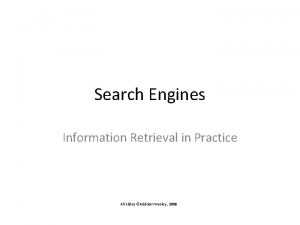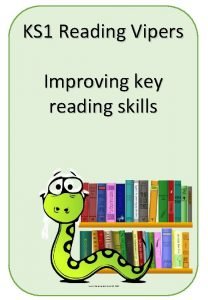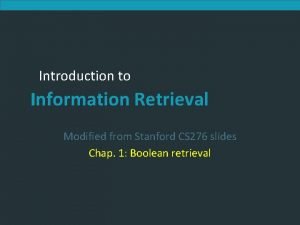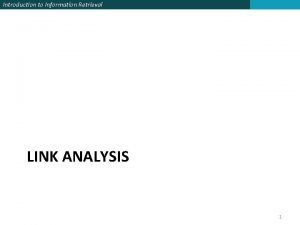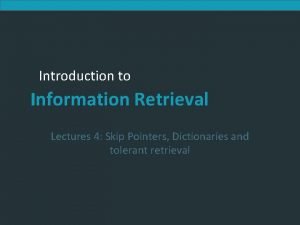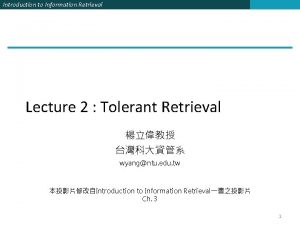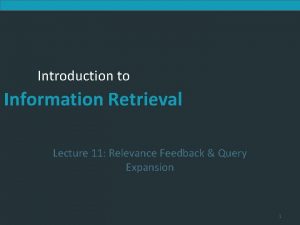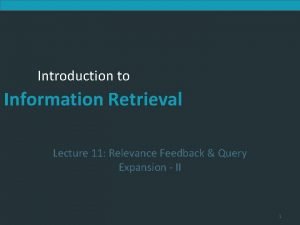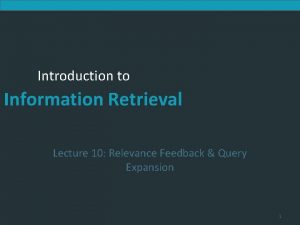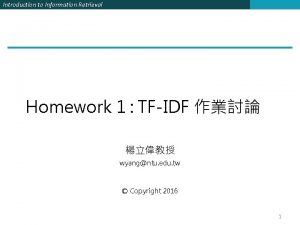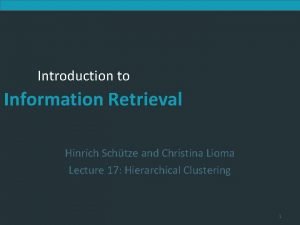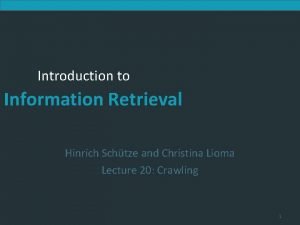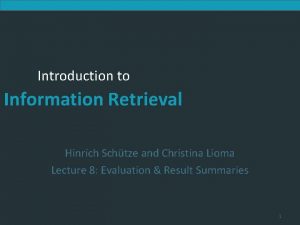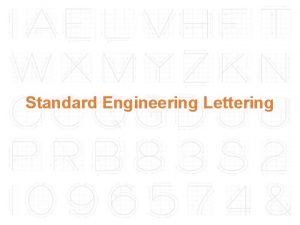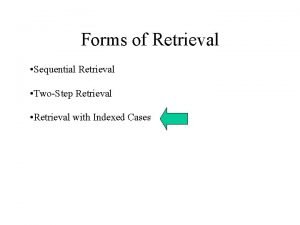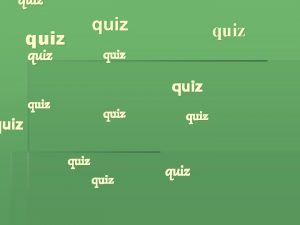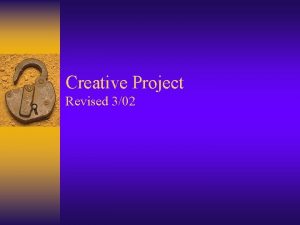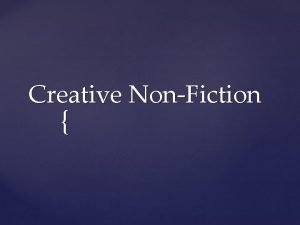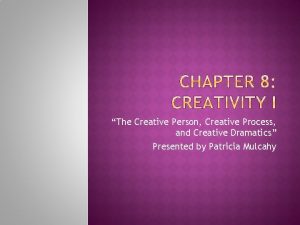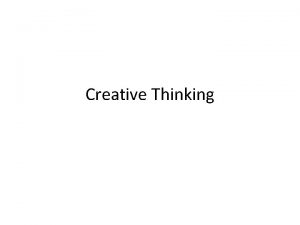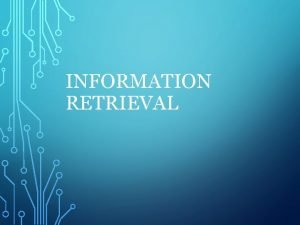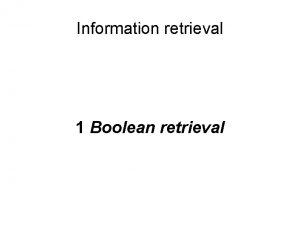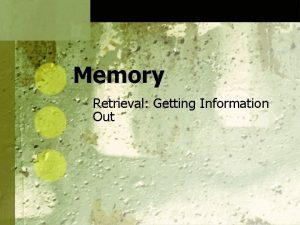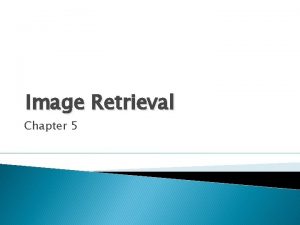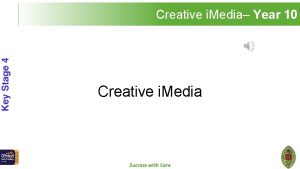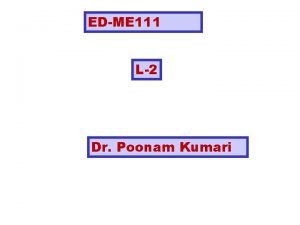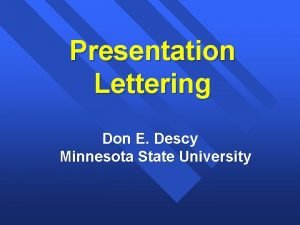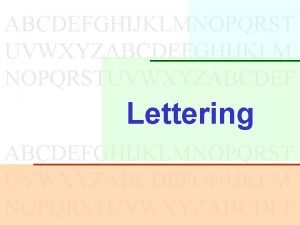Creative Lettering Year 10 Retrieval Phase Retrieval Quiz












































































- Slides: 76

Creative Lettering Year 10

Retrieval Phase Retrieval Quiz Questions: 1. What work is completed within Assessment Objective 1? 2. What work is completed within Assessment Objective 2? 3. What work is completed within Assessment Objective 3? 4. What work is completed within Assessment Objective 4? 5. Why must your always draw with a light pencil line? 6. What is the difference between Tone and Mark making?

Retrieval Phase Retrieval Quiz/Low Stakes Quiz Questions: 1. What work is completed within A O 1? 2. What work is completed within A O 2? Answers: Research of the topic and Artists analysis. Development of ideas using a range of possibilities and using different materials and techniques. 3. What work is completed within A O 3? Taking photos of images and draw from them and real life. 4. What work is completed within A O 4? Final outcome and annotation to explain the work as it has progressed. 5. Why must your always draw with a light pencil line? As you don’t want to leave unwanted marks on the page Tone creates a smooth surface and Mark making 6. What is the difference between Tone and Mark creates a texture making?

s In c u r t al n tio P se a h L. I To gather a variety of different lettering styles of your chosen letter. (The first letter of your first name) Academic Vocabulary: Select Inspire Scale Research

e s a tic De e il b te a r ac r P e Ph Task It is important for you to do this yourself so you can select styles that you are inspired by and think you can work with. They can be in a variety of sizes You can choose from letter you find on the internet or lettering from food packets/newspapers/magazines/CD/DVD boxes… You can either create a word document if you are doing this on the computer or you can cut up the lettering within packaging/in magazines/newspapers… Here a few that I have selected for my over initials.

e s a n io t a s n o id l o Ph L. I To gather a variety of different lettering styles of your chosen letter. C • What are the 4 Assessment objectives? • Which Assessment Objective did the work you did today link to?

e s a n io t a s n o id l o Ph L. I To gather a variety of different lettering styles of your chosen letter. C • What are the 4 Assessment objectives? Assessment Objective 1 • Research and investigation of the topic / Artists analysis. Assessment Objective 2 • Development of ideas using a range of possibilities and using different materials and techniques. Assessment Objective 3 • Taking photos of images and draw from them and real life. Assessment Objective 4 • Final outcome and annotation to explain the work as it has progressed. • Which Assessment Objective did the work you did today link to? A 01 – Research and investigations into different aspects of your project such as the methods of working, Artists who link to theme, images collected from primary and secondary sources.

Retrieval Phase Retrieval Quiz Questions: 1. What is tone? 2. Why do we use tone in our drawings? 3. How to you make a light tone with your pencil? 4. How do you create a smooth area of tone with your pencil? 5. Where is the darkest tone on an object?

Retrieval Phase Retrieval Quiz Questions: 1. What is tone? Answers: 2. Why do we use tone in our drawings? Showing the areas of light and dark To make it look 3 D 3. How to you make a light tone with your pencil? Press gently 4. How do you create a smooth area of tone with your pencil? Use the side of the lead instead of the tip 5. Where is the darkest tone on an object? Where the light source is farthest away

s In c u r t na o ti l. P se a h L. I Use the research you have collected to produce a creative page using a range of lettering styles. Academic Vocabulary: Select Inspire Scale Layout You will need to consider the following: • Make the letters you have printed out stand out by adding colour to them, • Make sure you are creative with how you stick your letters down, • Leave space to draw some lettering onto your page.

e s a e tic ib l De te a er Ph Task ac r P Ideas…Here I have stuck images over the pages of an old book, you could do the same if you have no paper. Or you can look at the next slide and just draw from the selection you have found.

e s a e tic ib l De te a er Ph ac r P Draw from your lettering you have found. Use any materials you have to add detail to them.

e s a n io t a s n o id l o Ph L. I Use the research you have collected to produce a creative page using a range of lettering styles. C • What are the different techniques you can use to add detail to drawings?

Retrieval Phase Retrieval Quiz Questions: 1. What work is completed within Assessment Objective 1? 2. What work is completed within Assessment Objective 2? 3. What work is completed within Assessment Objective 3? 4. What work is completed within Assessment Objective 4? 5. How do you create texture within a drawing? 6. How do you make any drawing look 3 D?

Retrieval Phase Retrieval Quiz/Low Stakes Quiz Questions: Answers: 1. What work is completed within A O 1? Research of the topic and Artists analysis. 2. What work is completed within A O 2? Development of ideas using a range of possibilities and using different materials and techniques. Taking photos of images and draw from them and real life. 3. What work is completed within A O 3? 4. What work is completed within A O 4? 5. How do you create texture within a drawing? 6. How do you make any drawing look 3 D? Final outcome and annotation to explain the work as it has progressed. Use mark making to make marks to produce different types of textures, Change the shades of tone to create blends from dark to light, showing a gradual change therefore making it look round.

s In c u r t na o ti l. P se a h L. I To produce an alphabet using a range of different lettering styles and colouring techniques. Academic Vocabulary: Style Shape Techniques Scale Layout

e s a ib l De te a er t c a Pr i ce Ph Task Create your own alphabet using a range of styles of letting, the below points will help you. • Think about the size of each letter, make each one stand out by changing the scale. • Use a range of colour within the whole of your alphabet. • Think about using different colouring techniques within each letter you draw. • Make sure you use the whole page no matter the size of the sheet you are drawing on. You may want to plan it out first.

e s a e tic ib l De te a er ac r P Ph These examples may help you, you don’t have to draw them in a line, they can be dotted around the page if you wish.

e s a e tic ib l De te a er Ph ac r P More examples to help…

e s a n io t a s n o id l o Ph L. I To produce an alphabet using a range of different lettering styles and colouring techniques. C • What can you do to improve the quality of your lettering drawn? • What is the Assessment Objective linked to your work completed?

Retrieval Phase Retrieval Quiz Questions: 1. What is Assessment Objective 1? 2. Why do we need to refine work? 3. Why do you need to use different materials/ techniques within your work? 4. There are two ways of describing the orientation of a standard canvas. What are they? 5. How many primary colours are there?

Retrieval Phase Retrieval Quiz Questions: 1. What is Assessment Objective 1? 2. Why do we need to refine work? 3. Why do you need to use different materials/ techniques within your work? Answers: Research of the topic and Artists analysis. To show we are able to use the understanding gained to make improvements. To show the understanding you have of using them. 4. There are two ways of describing the orientation Landscape and Portrait of a standard canvas. What are they? 3 – Red, Blue and Yellow 5. How many primary colours are there?

s In c u r t al n tio P se a h L. I To creatively and imaginatively develop and improve letters within your alphabet. Academic Vocabulary: Style Shape Techniques Scale Materials Refine

e s a e tic ib l De te a er ac r P Ph Task • Redraw 3 letters that you think can be improved. • Think about the size of each letter, make each one stands out by changing the scale. Make the most of the whole page you are drawing onto. • Change the colouring technique you have used in the original letter or if you have no colours simply change the technique some how.

e s a ti a d s n o i l o on Ph L. O To creatively and imaginatively develop and improve letters within your alphabet. C • How have you been able to improve your lettering? • What did you change?

Retrieval Phase Retrieval Quiz Questions: 1. What is Assessment Objective 2? 2. What does composition mean? 3. Name one pair of complementary colours. 4. What is another word for tone? 5. Name a 'hot' colour.

Retrieval Phase Retrieval Quiz Questions: Answers: 2. What does composition mean? Development of ideas using a range of possibilities and using different materials and techniques. The layout / how Art work is arranged. 3. Name one pair of complementary colours. Red & Green / Blue & Orange / Purple & Yellow. 4. What is another word for tone? Shading 5. Name a 'hot' colour. Red / Orange / Yellow 1. What is Assessment Objective 2?

s In c u r t al n tio P se a h L. I To be inspired by research on fairground style lettering to creatively draw own letters or words in the same style. Academic Vocabulary: Style Shape Techniques Scale Layout

e s a e tic ib l De te a er ac r P Ph Task Use these examples to produce drawings from or you can research your own. You must do a minimum of 3 (mixture of letters and words).

e s a n it o a il d Co o s n Ph L. I To be inspired by research on fairground style lettering to creatively draw own letters or words in the same style. • Find out 6 facts about the ‘Fairground’ style of lettering.

Retrieval Phase Retrieval Quiz Questions: 1. Which of the following materials would give the softest edges in a drawing? A. 2 H pencil B. Pen and ink C. Chalk pastels D. A marker pen 2. If you wanted to repeat an image over and over again, what material might be appropriate? A. A piece of lino and a cutter B. A ruler and a biro C. A whisk and a fan D. A piece of carpet and some masking tape 3. How could you 'fix' a charcoal drawing? A. With cling film B. With hairspray C. With a roller D. With tracing paper 4. Which of the following materials would not be suitable to make a quick sketch in a sketchbook? A. Charcoal B. Clay C. Pencil D. Pen and ink 5. If a project is said to be 'Mixed Media', what does that mean? A. It is confused about its purpose B. Several projects have been lined up together C. It has been created from more than one material or medium D. It is only half as successful as it should be

Retrieval Phase Retrieval Quiz Questions: Answers: 1. Which of the following materials would give the softest edges in a drawing? 2. If you wanted to repeat an image over and over again, what material might be appropriate? 3. How could you 'fix' a charcoal drawing? C. Chalk pastels 4. Which of the following materials would not be suitable to make a quick sketch in a sketchbook? 5. If a project is said to be 'Mixed Media', what does that mean? B. Clay A. A piece of lino and a cutter B. With hairspray C. It has been created from more than one material or medium

s In c u r t al n tio P se a h L. I: To be able to creatively and imaginatively draw words that emphasize their meanings. Academic Vocabulary: Style Shape Techniques Scale Represent

e s a e it c ib l De te a er ac r P Ph Understanding Onomatopoeia? Can you come up with some examples of onomatopoeia?

e s a e it c De lib te a er ac r P Ph Examples of onomatopoeia • splash • spray • sprinkle • squirt • drip • Drizzle • Bubble • Dash • giggle • growl • Jump • mumble • zoom • belch • chatter • whoosh

e s a e tic l e D i te a r e b ac r P Ph

e s a e tic l e D te a r e b ac r P Ph Task Come up with 3 designs on paper of words that look like their meaning and add colour to them to make them stand out. (You can add more to fill the page at a later date. ) i Make sure you use a range of colouring techniques within and around each word.

e s a e tic ib l De te a er Ph ac r P These may help you…

e s a n it o a il d Co o s n Ph L. I: To be able to creatively and imaginatively draw words that emphasize their meanings. • What does onomatopoeia mean?

Retrieval Phase Retrieval Quiz Questions: 1. What is Assessment Objective 4? 2. What does the word Scale mean? 3. How many pairs of complementary colours are there? 4. What are the different techniques you can use with coloured pencil? 5. Name a ‘Cold' colour.

Retrieval Phase Retrieval Quiz Questions: 1. What is Assessment Objective 4? 2. What does the word Scale mean? Answers: Final outcome and annotation to explain the work as it has progressed. The size of something. 3. How many pairs of complementary colours are there? 3 - Red & Green / Blue & Orange / Purple & Yellow. 4. What are the different techniques you can use with coloured pencil? Block, Single Colour Blend, Double Colour Blend. 5. Name a ‘Cold' colour. Green / Blue / Purple

s In c u r t al n tio P se a h L. I: To gain an appreciation and understanding of the use of text styles to enhance meaning. Academic Vocabulary: Style Shape Techniques Scale Devlop

e s a e tic ib l De te a er ac r P Ph Task Chose one of your designs you have drawn that you think could be produced more creatively and draw it onto a sheet of paper, you will need to think of an effective colour scheme to make your word stand out.

e s a n it o a il d Co o s n Ph L. I: To gain an appreciation and understanding of the use of text styles to enhance meaning. • List the 4 Assessment Objectives. • Which one does the work you have produced today fall into?

Retrieval Phase Retrieval Quiz Questions: 1. What work is completed within Assessment Objective 1? 2. What work is completed within Assessment Objective 2? 3. What work is completed within Assessment Objective 3? 4. What work is completed within Assessment Objective 4? 5. Why must your always draw with a light pencil line?

Retrieval Phase Retrieval Quiz Questions: 1. What work is completed within A O 1? 2. What work is completed within A O 2? Answers: Research of the topic and Artists analysis. Development of ideas using a range of possibilities and using different materials and techniques. 3. What work is completed within A O 3? Taking photos of images and draw from them and real life. 4. What work is completed within A O 4? Final outcome and annotation to explain the work as it has progressed. 5. Why must your always draw with a light pencil line? As you don’t want to leave unwanted marks on the page

s In c u r t al n tio P se a h L. I: To show an understanding of lettering through drawings inspired by Artist’s. Academic Vocabulary: Style Shape Techniques Scale Inspired

e s a i ce De e il b te a r t c a r P Ph Task Look at the picture of the word ‘POP’ by Roy Lichtenstein and redraw it in you own way so that the word still looks like it meaning.

e s a tic e il b te a r e Ph ac r P De Here are some examples…

e s a n it o a il d Co o s n Ph L. I: To show an understanding of lettering through drawings inspired by Artist’s. • What makes a successful drawing of lettering? • How does your lettering drawn link to the Artist Roy Lichtenstein?

Retrieval Phase Retrieval Quiz Questions: 1. What is tone? 2. Why do we use tone in our drawings? 3. How to you make a light tone with your pencil? 4. Why do you look at Artists’ work? 5. What is annotation?

Retrieval Phase Retrieval Quiz Questions: 1. What is tone? Answers: 2. Why do we use tone in our drawings? Showing the areas of light and dark To make it look 3 D 3. How to you make a light tone with your pencil? Press gently 4. Why do you look at Artists’ work? To help inspire the way you work and to build an understanding on theme within a project. 5. What is annotation? Writing about the work you are doing.

s In c u r t al n tio P se a h L. I: To develop an understanding of Artists who use lettering within their work. Academic Vocabulary: Style Shape Lettering Techniques Scale Inspired Accurate

e s a tic De e il b te a r ac r P e Ph Task You will need to choose one of the following images and make an exact copy of it to help understand the way in which the Artist works. Roy Lichtenstein

e s a n it o a il d Co o s n Ph L. I: To develop an understanding of Artists who use lettering within their work. • What do you notice about the colours that Roy Lichtenstein uses within his work? • Look on the internet and find 2 more Artists who use lettering within their work.

Retrieval Phase Retrieval Quiz Questions: 1. What work is completed within Assessment Objective 1? 2. What work is completed within Assessment Objective 2? 3. What work is completed within Assessment Objective 3? 4. What work is completed within Assessment Objective 4? 5. Why is annotation so important? 6. How do you make any drawing look 3 D?

Retrieval Phase Retrieval Quiz/Low Stakes Quiz Questions: Answers: 1. What work is completed within A O 1? Research of the topic and Artists analysis. 2. What work is completed within A O 2? Development of ideas using a range of possibilities and using different materials and techniques. Taking photos of images and draw from them and real life. 3. What work is completed within A O 3? 4. What work is completed within A O 4? 5. Why is annotation so important? 6. How do you make any drawing look 3 D? Final outcome and annotation to explain the work as it has progressed. It explains how much you understand about your own work and the work of others. Change the shades of tone to create blends from dark to light, showing a gradual change therefore making it look round.

s In c u r t al n tio P se a h L. I: To develop an understanding of Artists who use lettering within their work. Academic Vocabulary: Style Lettering Techniques Analyse Inspiration Annotation Opinion

e s a tic De e il b te a r ac r P e Ph Task Using the information below or any information you find on the internet make some notes on the Artist Roy Lichtenstein. Remember you must make sure all that you write is in your own words.

e ic ct De a Pr e e at has r e lib P Roy Lichtenstein was born in New York on 27 th October in 1923. He became famous for his bright and bold paintings of comic strip cartoons as well as his paintings of everyday objects. He was best known as a painter, he made different types of art including sculpture, murals, prints and ceramics. Roy Lichtenstein was one of the leaders of the pop art movement. His work was inspired by comic strip art and advertising imagery. When he was young, Roy Lichtenstein would often draw portraits of jazz musicians playing on stage. He studied at Ohio State University, but he had to leave due to World War 2. Between 1943 and 1946 Lichtenstein served as a military artist, draughtsman and orderly. After the conclusion of World War 2, Roy completed his studies at Ohio. He remained at the university for another ten years, working as an art instructor. His first solo exhibition was in New York in 1951. His work during the 1950 s was influenced by Cubism, Expressionism and Abstract Expressionism. In the late 1950 s, Roy Lichtenstein started to add hidden images (for example Mickey Mouse and Bugs Bunny) to his work. In 1961, Roy Lichtenstein started to produce his first pop art paintings. Look Mickey feature the images of Mickey Mouse and Donald Duck. Lichtenstein’s technique often involved using stencils to create his Art work, he wanted his work to look as though they had been created using a printing press. He wanted his work to look machine like so he used mainly primary colours, thick outlines, and Benday dots. His series of comic strip scenes mimicked a cartoon style, but at a much larger scale. In 1961 and 1962, Lichtenstein produced images of household objects, such as: golf balls, running shoes and hot dogs. Whaam! and Drowning Girl, both from 1963, are two of his most famous works. Roy Lichtenstein died on 29 th September 1997, aged 73. He was suffering with pneumonia.

e s a n it o a il d Co o s n Ph L. I: To develop an understanding of Artists who use lettering within their work. • Write your opinion on the work of Roy Liechtenstein.

Retrieval Phase Retrieval Quiz Questions: 1. What is Assessment Objective 1? 2. Why do we need to refine work? 3. Why do you need to use different materials/ techniques within your work? 4. There are two ways of describing the orientation of a standard canvas. What are they? 5. How many primary colours are there?

Retrieval Phase Retrieval Quiz Questions: 1. What is Assessment Objective 1? 2. Why do we need to refine work? 3. Why do you need to use different materials/ techniques within your work? Answers: Research of the topic and Artists analysis. To show we are able to use the understanding gained to make improvements. To show the understanding you have of using them. 4. There are two ways of describing the orientation Landscape and Portrait of a standard canvas. What are they? 3 – Red, Blue and Yellow 5. How many primary colours are there?

s In c u r t al n tio P se a h L. I: To show your understanding of the Artist’s style of lettering. Academic Vocabulary: Style Lettering Techniques Analyse Inspiration Annotation Opinion

e s a Ph Produce a title for an Artist study sheet for the Artist ‘Roy Lichtenstein’ ce i De e il b te a r t c a r P Task think about the way that he uses lettering within his work and what the colours are that he uses. We will put the image you have drawn and the information you have written together with this title on a study sheet when we are back at school.

e s a n it o a il d Co o s n Ph L. I: To show your understanding of the Artist’s style of lettering. • How does your title for the Artists work link to this style of Art?

Retrieval Phase Retrieval Quiz Questions: 1. What is Assessment Objective 2? 2. What does composition mean? 3. Name one pair of complementary colours. 4. What is another word for tone? 5. Name a 'hot' colour.

Retrieval Phase Retrieval Quiz Questions: Answers: 2. What does composition mean? Development of ideas using a range of possibilities and using different materials and techniques. The layout / how Art work is arranged. 3. Name one pair of complementary colours. Red & Green / Blue & Orange / Purple & Yellow. 4. What is another word for tone? Shading 5. Name a 'hot' colour. Red / Orange / Yellow 1. What is Assessment Objective 2?

s In c u r t al n tio P se a h L. I: To develop an understanding of Artists who use lettering within their work. Academic Vocabulary: Style Lettering Techniques Bold Scale

e s a tic e at De r e lib ac r P e Ph Choose one of the Artists below and make a copy of their work… Robert Indiana has created his own work that is based on a single word. Peter Blake has created his own alphabet of found images.

e s a n it o a il d Co o s n Ph L. I: To develop an understanding of Artists who use lettering within their work. • Why did you choose the Artist you have selected? • Which Assessment Objective out of 1 -4 does this work fall into?

Retrieval Phase Retrieval Quiz Questions: 1. What is Assessment Objective 4? 2. What does the word Scale mean? 3. How many pairs of complementary colours are there? 4. What are the different techniques you can use with coloured pencil? 5. Name a ‘Cold' colour.

Retrieval Phase Retrieval Quiz Questions: 1. What is Assessment Objective 4? 2. What does the word Scale mean? Answers: Final outcome and annotation to explain the work as it has progressed. The size of something. 3. How many pairs of complementary colours are there? 3 - Red & Green / Blue & Orange / Purple & Yellow. 4. What are the different techniques you can use with coloured pencil? Block, Single Colour Blend, Double Colour Blend. 5. Name a ‘Cold' colour. Green / Blue / Purple

s In c u r t al n tio P se a h L. I: To develop an understanding of Artists who use lettering within their work. Academic Vocabulary: Style Lettering Techniques Analyse Inspiration Annotation Opinion

e s a tic De e il b te a r ac r P e Ph Now look up the artist you have selected on the internet and write down 10 interesting facts about him in your own words. Robert Indiana has created his own work that is based on a single word. Peter Blake has created his own alphabet of found images.

e s a n it o a il d Co o s n Ph L. I: To develop an understanding of Artists who use lettering within their work. • Write your opinion on the work of either Peter Blake or Robert Indiana depending on which one you have been looking at.
 Ptychography
Ptychography Tall man technique
Tall man technique One point perspective vs two point perspective
One point perspective vs two point perspective Instrument drawing
Instrument drawing Block style vs modified block style
Block style vs modified block style Architectural hand lettering
Architectural hand lettering Technical drawing vocabulary
Technical drawing vocabulary Key words for cause and effect text structure
Key words for cause and effect text structure Architectural lettering
Architectural lettering The size of the title block is mm x mm
The size of the title block is mm x mm 1990 lettering
1990 lettering What are the 8 stages of sdlc?
What are the 8 stages of sdlc? Introduction to sdlc
Introduction to sdlc Normal phase vs reverse phase chromatography
Normal phase vs reverse phase chromatography Hplc reverse phase vs normal phase
Hplc reverse phase vs normal phase Mobile phase and stationary phase
Mobile phase and stationary phase Stationary phase in gas chromatography
Stationary phase in gas chromatography Normal phase vs reverse phase chromatography
Normal phase vs reverse phase chromatography Line vs phase voltage
Line vs phase voltage Hplc detector types
Hplc detector types In a triangle connected source feeding a y connected load
In a triangle connected source feeding a y connected load Csce 441
Csce 441 Creative imedia revision quiz
Creative imedia revision quiz Year 6 leavers poem for teacher
Year 6 leavers poem for teacher Chinese new year food quiz
Chinese new year food quiz Inductive reasoning definition
Inductive reasoning definition Inductive vs deductive geometry
Inductive vs deductive geometry New retrieval roulette
New retrieval roulette Multimedia information retrieval in irs
Multimedia information retrieval in irs Eliciting effect example
Eliciting effect example Sequential search
Sequential search Search engine architecture in information retrieval
Search engine architecture in information retrieval Basic retrieval tools
Basic retrieval tools Retrieval practice cpd
Retrieval practice cpd Lexical retrieval
Lexical retrieval Retrieval capp
Retrieval capp What is precision and recall in information retrieval
What is precision and recall in information retrieval Storage and retrieval technologies in multimedia
Storage and retrieval technologies in multimedia Modern information retrieval
Modern information retrieval Query operations in information retrieval
Query operations in information retrieval Memory encoding techniques
Memory encoding techniques Long term storage and retrieval
Long term storage and retrieval Mdland
Mdland Ora-12631: username retrieval failed kerberos
Ora-12631: username retrieval failed kerberos Recall skip pointers: what is skip span?
Recall skip pointers: what is skip span? Index construction in information retrieval
Index construction in information retrieval Bsbi vs spimi
Bsbi vs spimi Which internet service is used for information retrieval
Which internet service is used for information retrieval Information retrieval tutorial
Information retrieval tutorial Wild card queries in information retrieval
Wild card queries in information retrieval Browse capabilities in information retrieval system
Browse capabilities in information retrieval system Link analysis in information retrieval
Link analysis in information retrieval Information retrieval lmu
Information retrieval lmu Defense acquisition management information retrieval
Defense acquisition management information retrieval Advantages of information retrieval system
Advantages of information retrieval system Memory encoding
Memory encoding Basic retrieval queries in sql
Basic retrieval queries in sql Boolean retrieval model in python
Boolean retrieval model in python Ultimate cause of behavior
Ultimate cause of behavior Information retrieval nlp
Information retrieval nlp Signature file structure in information retrieval system
Signature file structure in information retrieval system Information retrieval slides
Information retrieval slides Retrieval practice
Retrieval practice Relevance information retrieval
Relevance information retrieval Vipers retrieve
Vipers retrieve Stanford information retrieval
Stanford information retrieval Link analysis in information retrieval
Link analysis in information retrieval Which is a good idea for using skip pointers
Which is a good idea for using skip pointers Log frequency weighting
Log frequency weighting Levenshtein distance for oslo-snow
Levenshtein distance for oslo-snow Information retrieval
Information retrieval Information retrieval
Information retrieval Relevance information retrieval
Relevance information retrieval Information retrieval
Information retrieval Information retrieval
Information retrieval Information retrieval
Information retrieval Information retrieval
Information retrieval
